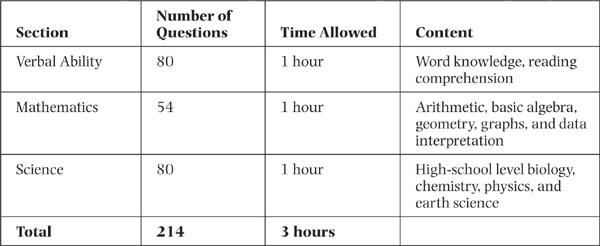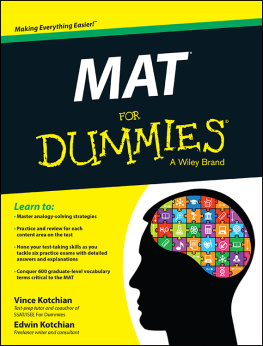
Copyright 2013 by The McGraw-Hill Companies, Inc. All rights reserved. Except as permitted under the United States Copyright Act of 1976, no part of this publication may be reproduced or distributed in any form or by any means, or stored in a database or retrieval system, without the prior written permission of the publisher. ISBN: 978-0-07-178989-9
MHID: 0-07-178989-8 The material in this eBook also appears in the print version of this title: ISBN: 978-0-07-178988-2, MHID: 0-07-178988-X. All trademarks are trademarks of their respective owners. Rather than put a trademark symbol after every occurrence of a trademarked name, we use names in an editorial fashion only, and to the benefit of the trademark owner, with no intention of infringement of the trademark.
Where such designations appear in this book, they have been printed with initial caps. McGraw-Hill eBooks are available at special quantity discounts to use as premiums and sales promotions, or for use in corporate training programs. To contact a representative please e-mail us at bulksales@mcgraw-hill.com. TERMS OF USE This is a copyrighted work and The McGraw-Hill Companies, Inc. (McGraw-Hill) and its licensors reserve all rights in and to the work. Use of this work is subject to these terms.
Except as permitted under the Copyright Act of 1976 and the right to store and retrieve one copy of the work, you may not decompile, disassemble, reverse engineer, reproduce, modify, create derivative works based upon, transmit, distribute, disseminate, sell, publish or sublicense the work or any part of it without McGraw-Hills prior consent. You may use the work for your own noncommercial and personal use; any other use of the work is strictly prohibited. Your right to use the work may be terminated if you fail to comply with these terms. THE WORK IS PROVIDED AS IS. McGRAW-HILL AND ITS LICENSORS MAKE NO GUARANTEES OR WARRANTIES AS TO THE ACCURACY, ADEQUACY OR COMPLETENESS OF OR RESULTS TO BE OBTAINED FROM USING THE WORK, INCLUDING ANY INFORMATION THAT CAN BE ACCESSED THROUGH THE WORK VIA HYPERLINK OR OTHERWISE, AND EXPRESSLY DISCLAIM ANY WARRANTY, EXPRESS OR IMPLIED, INCLUDING BUT NOT LIMITED TO IMPLIED WARRANTIES OF MERCHANTABILITY OR FITNESS FOR A PARTICULAR PURPOSE. McGraw-Hill and its licensors do not warrant or guarantee that the functions contained in the work will meet your requirements or that its operation will be uninterrupted or error free.
Neither McGraw-Hill nor its licensors shall be liable to you or anyone else for any inaccuracy, error or omission, regardless of cause, in the work or for any damages resulting therefrom. McGraw-Hill has no responsibility for the content of any information accessed through the work. Under no circumstances shall McGraw-Hill and/or its licensors be liable for any indirect, incidental, special, punitive, consequential or similar damages that result from the use of or inability to use the work, even if any of them has been advised of the possibility of such damages. This limitation of liability shall apply to any claim or cause whatsoever whether such claim or cause arises in contract, tort or otherwise.
Contents
Introduction
FORMAT OF THE TEST
The NLN PAX-RN is administered by the National League for Nursing, a leading professional organization for nurse faculty and others involved in nursing education. It is designed to measure your abilities in the academic areas that are central to nursing education.
The NLN exam is a traditional paper-and-pencil test. All of the questions on the NLN PAX-RN exam are multiple-choice items, each with four answer choices. The format of the test is shown below. 
HOW THE TEST IS SCORED
For each section of the NLN PAX-RN exam, you receive a raw score based on how many items you answered correctly. Some questions on the exam are included for experimental reasons and are therefore not scored. As a result, the highest possible scores for each section are as follows: Verbal Ability, 60; Mathematics, 40; and Science, 60.
You will also receive a composite score that is a weighted combination of your scores on the separate test sections. Composite scores may range from 0 to 200. In addition, you receive percentile scores for each test section and for the test as a whole. These scores are developed using a statistical process. They show what portion of a so-called norms group of similar test-takers earned raw scores that are lower than yours. For example, if you earned a raw score of 52 on the Verbal Ability section with a corresponding percentile score of 85, that means that 85 percent of the test-takers in the norms group earned raw scores that were lower than yours.
The NLN says that for each section, percentiles ranging from about 40 to 60 indicate average performance on the exam. Note that there is no official passing score on this exam. The schools that require applicants to take the NLN PAX-RN establish their own criteria about what scores are considered acceptable for admission.
TYPES OF QUESTIONS
Verbal Ability
On the NLN PAX-RN exam, the Verbal Ability questions are of two types. First, there are vocabulary questions that test your understanding of specific words. These questions may look like this: 1.
The candidates engaged in an acrimonious debate.
Acrimonious means a. polite. b. public. c. d. combative. Answer: d.Acrimonious means combative. Answer: d.Acrimonious means combative.
The second type of Verbal Ability question is reading comprehension. In this type of question, you are given a reading passage of 400 to 500 words. The passage is usually on a topic in science or medicine. Following the passage are six questions about its content. Each question has four answer choices. You must pick the best answer choice based on your understanding of the passage.
Here is an example: The food pyramid is a visual representation of how the different food groups can be combined to form a healthy diet. Although it has been a vital part of dietary guidelines for years, the pyramid is constantly undergoing analysis and revision as additional studying is done in nutritional fields. Recently, the pyramid has undergone another change regarding the unique dietary needs of seniors. According to an article published in the January 2008 issue of the Journal of Nutrition, modifications in the pyramid for older adults include an emphasis on fiber and calcium, as well as on vitamins D and B12. By incorporating these changes, the pyramid now indicates that the nutrients found in a persons routine daily consumption typically are not enough for seniors. Seniors need supplementation.
As people age, they tend to move less and thus need fewer calories to maintain their weight. Because seniors tend to eat a more limited amount, dietitians urge them to choose wisely. They are urged to eat nutrient-rich meals featuring such food as fruits, vegetables, low-fat dairy products, and high-fiber whole grains. Some experts recommend that older people purchase packaged versions of perishables because such foods last longer than the fresh kind. For example, dried and frozen fruit have a much longer shelf life, as do frozen or canned vegetables. Having a supply of these in the cupboard means fewer trips to the grocery store and less risk of running out of nutritional snacks.





 Copyright 2013 by The McGraw-Hill Companies, Inc. All rights reserved. Except as permitted under the United States Copyright Act of 1976, no part of this publication may be reproduced or distributed in any form or by any means, or stored in a database or retrieval system, without the prior written permission of the publisher. ISBN: 978-0-07-178989-9
Copyright 2013 by The McGraw-Hill Companies, Inc. All rights reserved. Except as permitted under the United States Copyright Act of 1976, no part of this publication may be reproduced or distributed in any form or by any means, or stored in a database or retrieval system, without the prior written permission of the publisher. ISBN: 978-0-07-178989-9